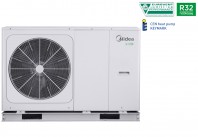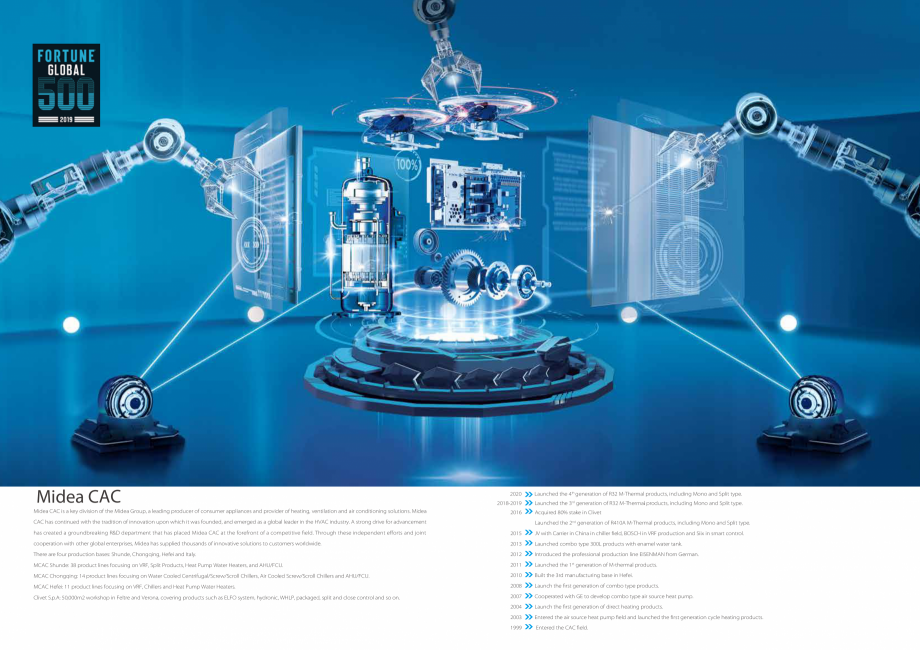Pompe de caldura Aer-Apa MIDEA
Limba: Engleza
Produse încluse în această documentație: Monobloc 6 kW, Monobloc 8 kW, Monobloc 10 kW, Monobloc 12 kW, Split 6 kW, Split 8 kW, Split 10 kW, Split 12 kW, Split 16 kW
6
6
7
T
3 4
5
9
8
3
8
7
7
FCU1
FHL2
FCUn
11
M
12
FHL2
FHLn
FHLn
Application 2:Auxiliary heat source provides additional heating
6
12
13
14
T2
8
9
Tn
7
M2
M1
M
2
FCU2
B
9
1
The room thermostats are not connected to the Mono unit but to a motorized valve. Each room’ s temperature is
regulated by the motorized valve on its water circuit. Domestic hot water is supplied from the domestic hot water tank
connected to the Mono unit. A bypass valve is required.
5
13
Mn
10
Application 2:Space Heating and Domestic Hot Water
T1
12
M2
FHL1
FHL1
Tn
11
5
.......
4
T2
M1
5
1
1
T1
TB
10
2
3
A
TA
4
Mn
10
If the unit’s outlet temperature is too low, the auxiliary heat source provides additional heating to raise the water
temperature to the set temperature. An additional 3-way valve is required. When the unit’s outlet temperature is too low,
the 3-way valve is open and the water flows through the auxiliary heat source. When the unit
... ascunde 





























